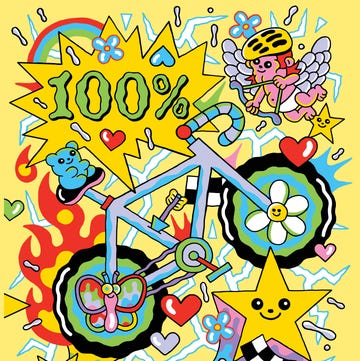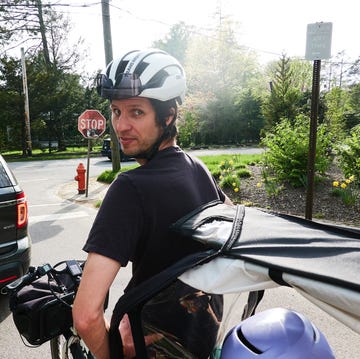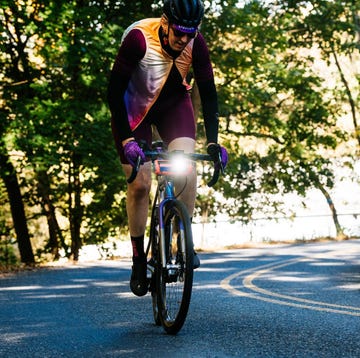F+B’s parent company, CSS Composites, makes road wheels for Chris King and Bontrager, so it’s unsurprising that the company now offers a dedicated road/all-road wheelset under its own brand. Those wheels are Forge + Bond’s CR Series. CR is short for “Crap Road,” which, as silly as that name is, appeals to me as the roads where I ride in eastern Pennsylvania often meet that description.
CSS differs from other manufacturers because it uses Fusionfiber Thermoplastic construction rather than toxic epoxies and resins. This construction is said to offer a stronger product and one that is more easily recycled at the end of its life. You can read more about Thermoplastic here.
F+B vs. Other CSS-produced Wheels
CSS Composites makes wheels for several brands, each offering riders a slightly different product and experience. CSS doesn’t copy and paste the same wheel design for every product it makes; each company’s product is unique. So, depending on the brand and wheelset, riders can choose various rim depths and widths, hub options, and intended usage.
For many riders, the choice will depend on brand affinities or complete bike OEM equipment. If you’re a fan of Chris King, you might want that name on your wheels, or maybe your new Trek came with a set of CSS-made Bontrager wheels.
With the F+B CR series, CSS built a wheel to its preferred specifications to perform in the sweet spot of all-road and gravel riding. F+B offers wheels in various options at various prices to suit the needs of many modern road, gravel, and all-road riders.
CR Numbers and Specifications
Forge + Bond offers the USA-made CR series with 35mm and 45mm rim depths. The 45 CR wheelset is not the lightest on the market, but they don’t tip the scale too much to be deemed overly heavy. Our pair weighed 1,596 grams (with chunky valves and tape), which isn’t too far off other wheelsets we’ve tested in this category.
The CR 45s are heavier than the Hunt 40 CGR (1,400 grams with valves and lockrings), but see less of a gap compared to the 1,500-gram Easton EC90 ALX wheels. Many riders will find the weight penalty negligible, especially considering the upsides of Forge + Bond‘s thermoplastic construction. However, if weight is your main priority, it’s likely worth considering other, more weight-competitive options.
Riders can purchase the CR wheels built with Industry Nine hubs ($2,199) or the trusty DT Swiss 350s ($1,899). Rims ($425 each) are available for those who want to build their own wheels.
Most notably, F+B sells another version of these wheels under the SHIFT CR name for $1299. This version uses a less flashy, F+B-branded Bitex hub laced to the same thermoplastic rims. If you want to get a set of these wheels with only a minor 30g weight penalty over the i9 hub set—and shave off almost half the price—this is the best value by far in the F+B line.
The finish of the wheels is quite striking in the sun. They have a nice carbon look without being gaudy. The decals, however, might not be everyone’s cup of tea. Luckily, they are removable if you want a more plain-looking wheel.
Sustainability
Aside from offering a smoother ride quality, the thermoplastic construction means the rims are recyclable at the end of their life. So, if you crack a rim, the materials can be repurposed into other smaller products.
This is possible thanks to long-chain polymers, using a nylon and carbon blend instead of the non-recyclable epoxies and resins used in traditional carbon fiber. The process also doesn’t produce the large amounts of harmful carbon dust typical of most carbon wheel manufacturing.
CSS is also committed to using all its waste to make other consumer goods. When they say zero waste, they mean it. They are about as close as technologically possible to 100% scrap usage. When asked, Brett Stahl, VP of Brand & Marketing, said, “Yes, almost all of the materials can be reused. 0.5% is typically nylon content that escapes during the wheel-building process.”
The scraps are compressed and molded into other products, such as the slick tire levers included with the wheels. However, most scrap is used outside of the cycling industry for products in other sporting goods and the aerospace industry. CSS would not provide us with more specific information on this.
I would still love to see the addition of more cycling-related products down the line using this recycled material. Or perhaps even some kind of consumer-centric recycling program where you can return your old or broken wheels to have them repurposed into another cycling component or tool. So, while the impact is small, these wheels are better for the environment than the typical offerings in the cycling industry, and I’m here for that.
Warranty
A brand’s warranty policy is important when buying bicycle components. Forge + Bond wheels carry a robust lifetime warranty. F+B also has a no-questions-asked policy return policy within the first 60 days of ownership.
F+B’s “Return To Fun Warranty Program” covers anything within the wheels' intended use case. So, if you were to crack your rim racing across the fields of Kansas, it would be replaced without issue. Crash replacement pricing is also available for cases outside of the intended uses. This means that even if you drive over the wheels with your car, you can get them replaced for a discounted price.
Ride Impressions
In my testing, F+B mountain wheels felt more damped and offered an improved experience on the trail. Would that also happen on the road or could it be even better?
Mountain bikes emphasize damping with suspension, large-volume tires, flex pivots, and component construction. So, removing those extra factors from the equation should allow the claimed damping benefits of Forge + Bond’s Fusion Fiber Thermoplastic construction to shine through.
In searching for speed through aerodynamics, a focus on comfort is often ignored (or at least set on the back burner). However, most riders would benefit from and enjoy a smoother riding bike. That’s where these wheels come into play. They maintain a modern wide and blunt aero profile (30.5mm outer width, hookless 25mm internal width).
The CR 45s are right on the money for most all-road and gravel riding in 2025. However, the 25mm internal hookless profile might dissuade some road riders and cause issues for riders using higher tire pressures or tires under 28mm wide. (The rims note a max pressure of 70 psi, a handy reminder to those who may be new to the hookless world.)
I spent most of my time riding these wheels on my Supersix Evo with a set of Gravelking Slick R 30mm tires (plumped up nearly 33mm by my measurement). This setup offers a nice, balanced road-style ride quality that compliments the rim’s characteristics. Meaning I wasn’t leaning on big volume tires to smooth out the road chatter or changing the handling characteristics of my road bike by squeezing in the biggest tire possible. On a smooth road, it felt very much like any other road setup I typically run.
While Forge + Bond doesn’t give exact aero numbers (nor did they do any aero testing on the rim), the 45mm depth we tested didn’t feel like it was giving up much in out-and-out aerodynamics. I was perfectly content with the aforementioned 30mm slicks paired with the 30.5 external width rim for most of my testing.
Changes in tire and rim width can impact aerodynamics in the lab, but on the road, you’d be hard-pressed to feel the difference in 1-2mm of tire width added or removed. The CR 45s don’t feel as fast as more dedicated aero wheels like the Cadex Ultra 50 but certainly seem to hold their own on the road. If Aero is your primary decision maker, you may want to look elsewhere at brands such as Fulcrum, Enve, or Hunt, which have more testing data to back up their Aero gains.
The real star of the show is the wheels’ silky ride quality. The magic happens thanks to the materials perfected by CSS composites. I tested the Forge + Bond wheels back-to-back against non-CSS-made rims, stiff carbon-spoked 40mm and 50mm wheels, and aluminum-rimmed 35mm wheels. The ride feel difference is noticeable from the first few seconds on a buzzy road. That smoothness I felt on the mountain bike wheels translated even more on the road.
The CR 45s have a buzz-eating quality that I can only equate to the feel of running big, supple gravel tires on other brands’ wheels. However, with the F+B wheels, you get that feeling even when running tires as skinny as 30mm (measured). This means you can still get that responsive skinny tire feel while keeping fatigue from harsh roads at bay over long rides without the weight or rolling resistance penalties that come with running thicker rubber.
However, compared to stiffer race wheels, some riders may feel these wheels are dull when out of the saddle. I don’t think that’s always a bad thing. Anyone doing long rides over less-than-ideal surfaces probably won’t mind the tradeoff.
While much of my CR 45 ride testing was with a carbon road bike with relatively normal-width tires, I also rode them with wider 35mm rubber on a steel all-road frame. As many know, wider tires tend to have a more significant impact on ride feel than anything else, so I was keen to see how that changed my impressions of these wheels. With this setup, the benefits of the thermoplastic technology were slightly less noticeable (or at least not as significant) as they felt on the stiffer carbon bike.
That’s not to say it isn’t noticeable or appreciated—the CR 45s still feel great with wider tires and a smooth steel frame. I found the combo of bigger tires, a compliant frame, and the wheels' smoothness achieves that all-day comfort so many riders seek.
While I might not pick these wheels when lining up for crit glory, I would choose these over other wheelsets for almost any other discipline. I wouldn’t hesitate to throw the CR 45s on for long training slogs, gravel races, or even bike-packing epics.
For Forge + Bond wheels, comfort is king—and I’m a fan of that comfort.
Trevor Raab is the senior photographer for Runner’s World and Bicycling, a dedicated cyclocross racer, and, occasionally, a product reviewer for the Test Team. He fits the typical “how I got into bikes” story: his dad introduced him to mountain bikes when he was a kid, then found skateboarding in the middle, worked as a bike shop mechanic, and now he’s riding or racing every sort of bike he can find.
Test Editor Dan Chabanov got his start in cycling as a New York City bike messenger but quickly found his way into road and cyclocross racing, competing in professional cyclocross races from 2009 to 2019 and winning a Master’s National Championship title in 2018. Prior to joining Bicycling in 2021, Dan worked as part of the race organization for the Red Hook Crit, as a coach with EnduranceWERX, as well as a freelance writer and photographer.






















